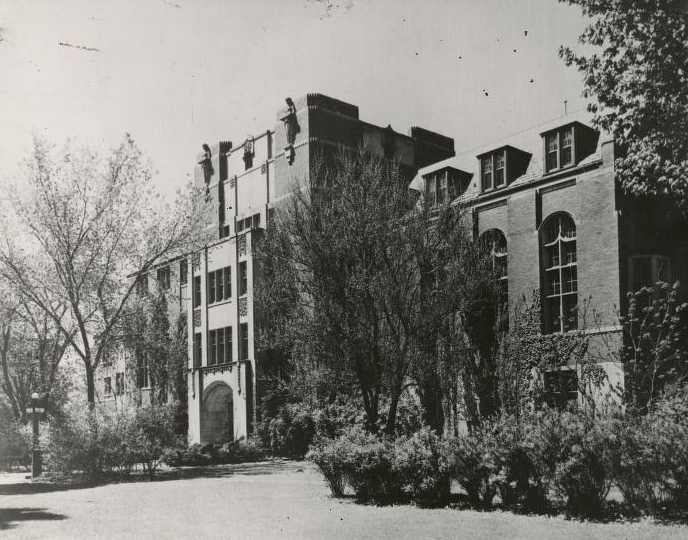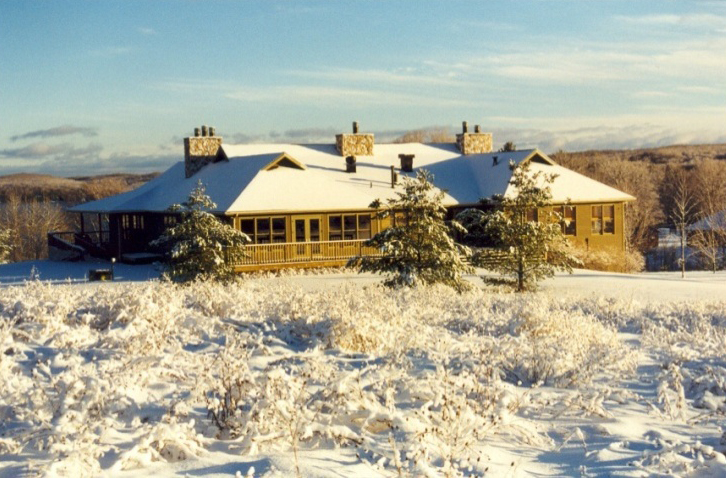For 100 years, the Alumnae Council has made its mark on the University of Michigan campus by providing support and encouragement for female students. As the Council plans for the future, we take a look back at its successes through this timeline.
1917
A group of enterprising women form the Alumnae Council, as a division of the Alumni Association, with a simple purpose—to promote the interests of women in the U-M community.
1921
Shut out of the Michigan Union because of their sex, members of the Council undertake a campaign to raise funds for the Michigan League. Led by Mary Bartron Henderson, the Council raises an astonishing $1 million for the League, which will be built on land donated by the University.

1929
The Michigan League opens, serving as a hub of social and cultural activities for all U-M students. “They were more gracious to the men than the men were to us,” says Cerise Tounsel, ’73, MA’75, the Council’s current chair. The Council manages the building until 1930.

1930
With the start of the Great Depression, students find it more difficult to afford college. So the Council turns its attention to raising money for scholarships. Gifts and bequests are forthcoming. Over the years, more than 33 are created. Many of the scholarships honor women such as Lucile Conger (pictured) who spent their careers helping others.
Today, the Council makes awards of $4,000 to $10,000, basing them on academic merit and community service as well as need. “We receive letters from students, lengthy detailed letters, about how much that scholarship has changed their whole life,” says Tounsel. (See the sidebar.)
“I owe a personal debt of gratitude to the Alumnae Council. It is not an overstatement to say that, without it, I would not have attended Michigan. Through the AC, a Toledo chapter decided to make me its ‘scholarship girl’ and gave me its entire scholarship fund. That gift made Michigan affordable for me as an out-of-state student.
I was the first member of my extended family to attend college. After my father died very suddenly during my freshman year, the AC reached out to me with a discretionary scholarship to help me make it to the end of the year. Through the AC, I was able to live in Henderson House my last two years at Michigan, which was an enormous help to my mom and me. (She went back to work at barely above minimum wage after my dad died.)
Through the AC, I learned about Camp Michigania, where I spent three wonderful summers as a staff member and made enduring friendships. Finally, after I graduated, I was fortunate to receive a Julia Emmanuel scholarship, which enabled me to attend law school at the University of Virginia.”
1937
The Council launches another fundraising campaign, this time to support the construction of a co-op residence for female students who cannot afford to live in the residence halls.

1945
The cost of constructing a co-op residence proves prohibitive, so the Council instead purchases the home of a professor at 1330 Hill St. and names it Henderson House, after Mary Bartron Henderson. Today, it is home to 25 women.
“Henderson House is more than just your average university housing,” says Ivy Ochieng, a U-M junior and current president of Henderson House. “It is a home that holds a community composed of students from all walks of life. With this diverse community of students and alumni, we are able to work together and empower each other, whether it may be sharing academic resources or singing karaoke together. Together, we celebrate the big and small things in life, forming lifelong friendships.”

1964
Once again addressing the needs of female students, the Council raises startup funds for the Center for the Education of Women, which settles into two rooms in the League. Initially, the CEW (shown here in 1969) is a resource not only for traditional students but also single mothers and older students who return to campus after having to pause their education. Today, from its current space on E. Liberty Street, CEW offer guidance, tutoring, and scholarships women and men.

1973
Numerous notable alumnae have received the Athena Award, which begins in 1973 and honors those who have made substantial contributions to society. Recipients include foreign affairs analyst Robin Wright, ’70, MA’71, HLLD’15; former U.S. Surgeon General Antonia Novello, MDRES’74, HLLD’94; former Chicago Tribune editor Ann Marie Lipinski, ’94; and ecologist Sandra Steingraber, MS’85, PhD’89. Pictured is the 2017 recipient, Mona Hanna-Attisha, ’98, MPH’08 (center), who helped expose the Flint water crisis, along with School of Public Health interim dean Cathleen M. Connell (left) and Cerise Tounsel.
A related project, Alumna in Residence, brings a notable alumna back to campus for a week.

1993
The Council makes a major contribution to Camp Michigania—the Alumni Association’s family camp. With a goal of building an education center, the Council raises $100,000.
2017-18
The Council celebrates its centennial. With seven active alumnae clubs, members continue to raise money for scholarships, awarding more than $660,000 in 2017 to various programs and scholars on the Ann Arbor campus.
The Council intends to provide that much or more for Michigan students this spring, as it celebrates the beginning of its second century. All are invited to join!
For more information about the Alumnae Council, visit its website and Facebook page.




